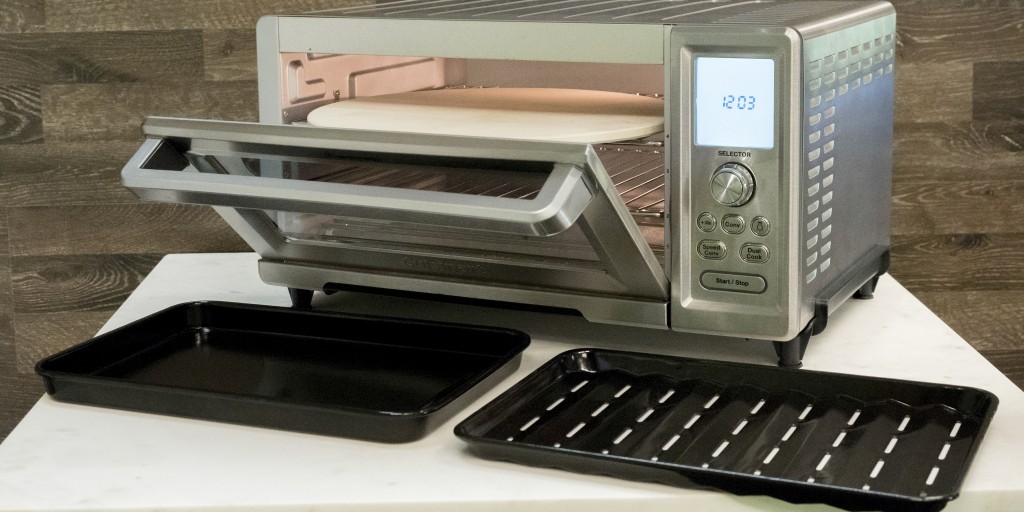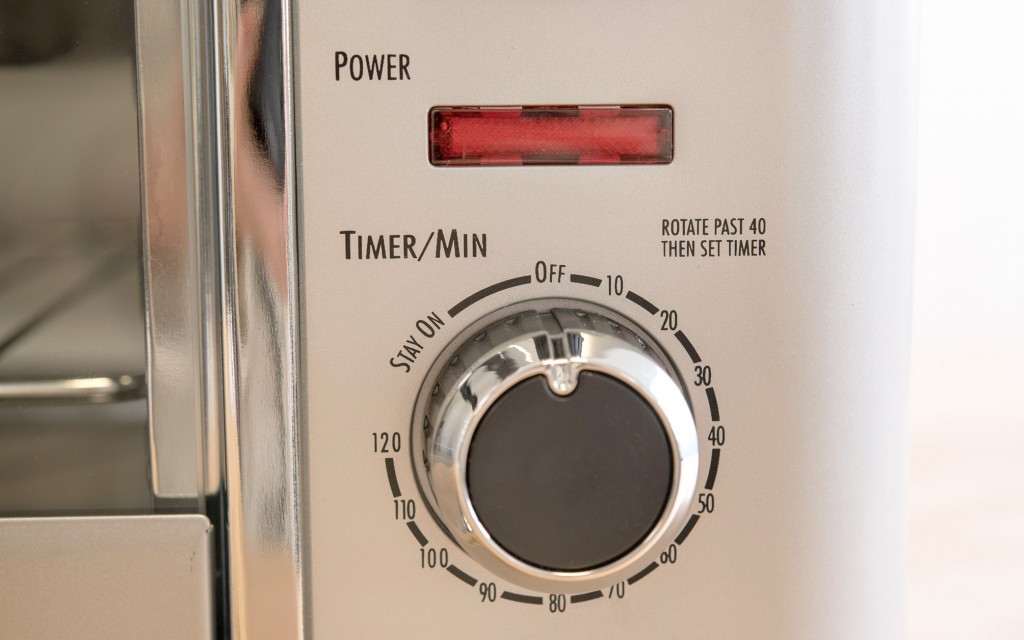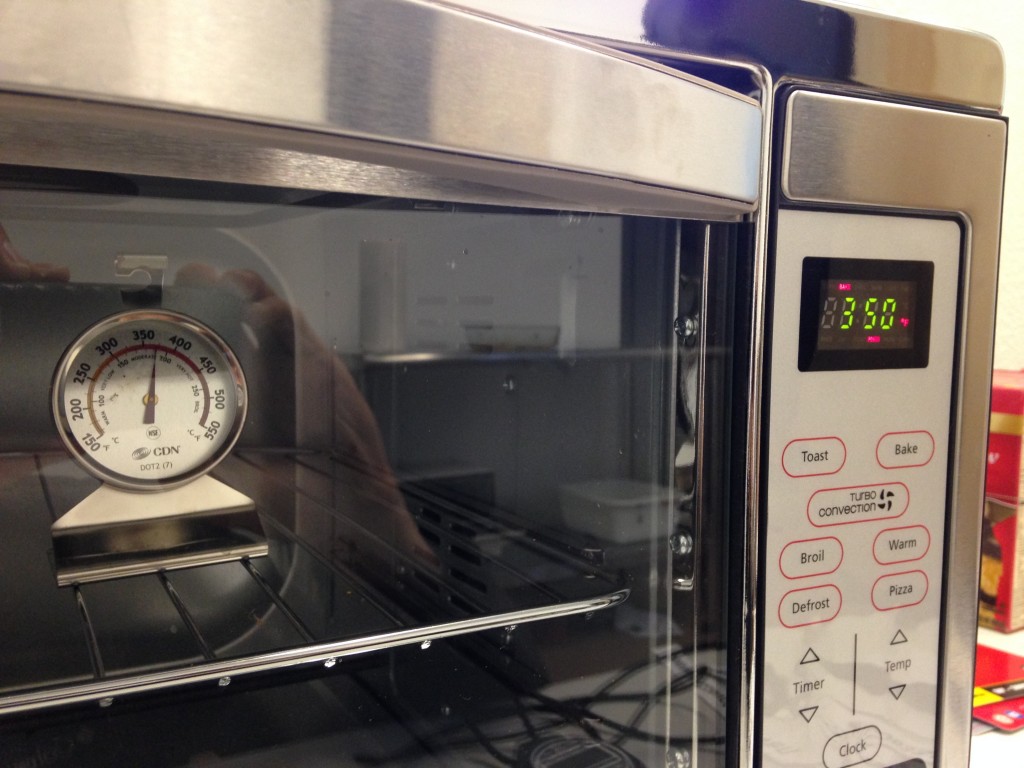Before we began testing toaster ovens we had many lengthy discussions about what would be the best food products to use. After considering our own experiences using a variety of kitchen appliances, scouring user reviews, and asking anybody who would lend an ear, we believe we came up with a list of testing foods that covers the full gamut of things users want to make in a toaster oven.
We broke our testing down into four main metrics. Three of them, toasting performance, baking performance, and frozen food preparation performance, focus on cooking quality. The final metric, ease of use, considers how simple each model is to use and whether or not they have the propensity to induce hunger-driven temper tantrums.
Baking Performance
To determine baking performance we identified three main categories of baked goods that would often be prepared in a countertop oven: fluffy desserts, dense desserts, and meats. Fluffy are those that are made from a batter that is going to rise a significant amount giving you a more light and sweet taste; your cakes and muffins and those sorts of things. Dense desserts are made from batters and doughs that don't rise very much resulting in more rich and heavy desserts, namely brownies and cookies. Meats are fairly self-explanatory.
In our testing, we selected classic white cake to test each model's performance in baking fluffy desserts. The light color made it easier to see any browning inconsistencies and the more subtle flavor made it easier to assess the physical attributes of the cake during tasting. In order to ensure consistency in our testing we used boxed cake mix and followed the cake mix manufacturer's directions. We assessed each cake for how evenly the outside had caramelized, how evenly the interior of the cake cooked, and how much moisture was retained. All of these things were easily assessed through visual inspections and taste test. Coincidentally, we had a lot of afternoon food coma office nap sessions during our toaster oven testing.
To test performance in dense dessert baking we felt we had to go with the classic chocolate chip cookie. Again, in the interest of consistency, we used store-bought cookie dough and followed the cookie manufacturer's baking instructions. We graded all of the cookies based on the evenness of cooking and level of moisture. We specifically wanted cookies that had just a bit of crunch on the outside with insides that were just a bit gooey.
Chicken drumsticks were our delicacy of choice to assess meat baking performance. We preheated each oven to 400˚F and then baked the drumsticks in a glass bakeware pan for 45 minutes. After they finished cooking we checked the internal temperature of each drumstick with a meat thermometer and tasted them. We were looking for drumsticks with nice crispy skins and fully cooked and moist meat.
Ease of Use
Apart from how easy it is to remove and clean the crumb tray, ease of use for toaster ovens mostly boils down to how simple it is to navigate through the plethora of functions. To assess this we held the inaugural toaster oven Olympics in our office. Participants were given a list of many things to do on each oven, including but not limited to changing between modes before and after starting a cook cycle, adjusting temperature and time in the middle of a cook cycle, turning convention on and off, and of course, cleaning the crumb tray. All of the participants then bestowed a grade upon each model based on how easily they were able to complete all of the tasks.
Temperature Accuracy
In order to test temperature accuracy, we purchased two of the most highly regarded oven thermometers. We found that these thermometers never differed from one another by more than 5˚, so we felt completely confident in their accuracy. During our testing, we put both of these thermometers in each oven and heated them from ambient temperature to 350˚, 400˚, and 450˚ on three separate occasions. We then checked the thermometers' temperatures at 7 minutes, 15 minutes, and 30 minutes. Many ovens claim 7 minutes is all the preheating time they need, but our test showed that not to be the case. However, some had great temperature accuracy at the 15 and 30-minute marks.
Frozen Meal Performance
We wanted our frozen meal preparation test to be both difficult and representative of how most oven owners use their ovens. To satisfy the difficult mandate we used frozen lasagna. The dense and thick nature of lasagna makes it somewhat difficult to cook all the way through without over crisping the outside. Ultimately we ended up throwing this test out (not literally, of course, we ate all the lasagna) because each model we tested was able to perform adequately, and performed very similarly, in cooking frozen lasagna.
To satisfy the representative bit we used the classic frozen pizza and the nostalgic tater tot. We made pizza in each model and graded them on how close they came to the ideal crispy on the outside yet chewy on the inside crust, how well the dough at the center was cooked, whether or not the cheese was fully melted, and if the pepperonis were just starting to crisp around the edges. For most models, we used a 12-inch pizza that was half cheese and half pepperoni so we could easily assess the quality of both toppings. The Panasonic FlashXpress can only accommodate a 9-inch pizza. We had trouble finding 9-inch frozen pizzas in any of our local supermarkets, so we made a few 6-inch pepperoni pizzas and a few 6-inch cheese pizzas in the Panasonic. For tater tots, we looked for crispy outsides and fluffy insides.
Toasting Performance
A toaster oven loses a lot of versatility points if it can't make decent toast. In our testing, we made toast in each model on the medium shade setting using each oven's toast mode. We then evaluated the resulting toast for evenness and taste. The ideal piece of toast would have an even level of browning across the face of the toast, and both sides of the toast would be identical. This is near impossible for a toaster oven to achieve because the rack inevitably leaves odd marks on the toast. However, some models were able to achieve high marks for their bread toasting ability.
We also assessed how well each model was able to toast bagels. The perfect bagel has an evenly toasted face and a backside that is warm but still untoasted and gooey. Every model we tested, with the exception of the Panasonic FlashXrpress, had a bagel mode that lowered the temperature of the bottom heating elements in order to achieve this. In our testing, we toasted bagels in each oven using the bagel mode (if applicable) on a medium shade setting, then graded the bagels on evenness, texture, and taste.
The ideal oven would have perfectly consistent heat throughout the entirety of its cooking chamber. In reality, ovens are inevitably going to lose some heat through their walls, thus the outer portions of the oven will be slightly cooler than the middle. This is not an issue for most baked goods, as they would be placed in the center of the oven anyway. However, toast is one item you might ram to capacity in a toaster oven, especially if you're hosting a big brunch party. Each oven has a toasting sweet spot in the center, and bits around the edge where bread won't get toasted as much. To test this we made toast maps by placing bread on all the extreme edges of the toasting rack. This revealed how big each model's toasting sweet spot was, and how much bread near the edges would be neglected.




